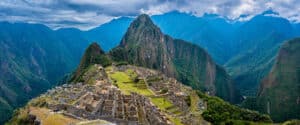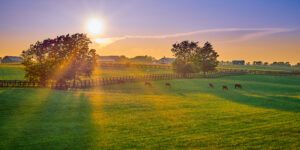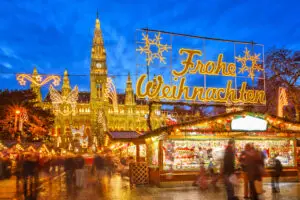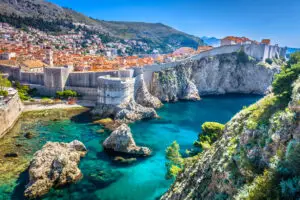Surely you have heard of Grand Canyon National Park, the mind-blowing spectacle of nature’s artistry that’s as grand as its name promises! Nestled in the heart of Arizona, this colossal chasm isn’t just a big deal—it’s one of the biggest deals in the natural world.
Imagine staring out over a vast expanse where time and the elements have sculpted the most intricate landscapes imaginable. Stretching over 277 miles long, up to 18 miles wide, and a mile deep, the Grand Canyon is a massive rift in the Earth’s crust that reveals layers of geological history dating back over 2 billion years. Yes, billion with a ‘B’—this place has been around for a while!
The colors of the canyon walls shift and shimmer with the day’s light, moving from deep oranges to fiery reds, and even subtle lavenders as the sun sets. But it’s not just a feast for the eyes. The park is a playground for adventurers and a haven for those seeking tranquility. Whether you’re ready to tackle white-water rafting on the Colorado River or looking to soak in the silence and vastness, the Grand Canyon delivers. Take a hike down the famed Bright Angel or Kaibab Trails and feel the awe of the canyon from within. Or if you prefer a bird’s eye view, skywalks and helicopter tours are ready to whisk you into the skies for a panoramic perspective few places on Earth can match.
The park is also a certified International Dark Sky Park, making it a stellar spot for stargazing. Imagine watching the Milky Way’s dazzling band spread across a sky free from light pollution, shooting stars zipping across the horizon, all framed by the silhouetted canyon.
For the culturally curious, the canyon is not just a natural wonder but a cultural treasure trove, home to Native American tribes for thousands of years. Visit the historic buildings at Grand Canyon Village, check out native arts and crafts, and take a moment to appreciate the stories and practices that enrich this place.
In a world where hyperbole is the norm, the Grand Canyon stands tall and mighty, needing no exaggeration. It’s not just a place you see but a place you feel. So pack your bags, grab your camera, and prepare for an experience that will leave you, quite literally, on the edge of your seat.
When To Go
The best time to visit the Grand Canyon largely depends on what you’re looking for in your visit. Each season offers distinct experiences and highlights that cater to different interests and preferences:
- Spring (March to May): This is a fabulous time to visit if you want to avoid the summer crowds and enjoy mild weather. The temperatures are comfortable, though it can still be a bit chilly in March and at higher elevations. This is also a great time for wildflower blooms, particularly at the lower elevations.
- Summer (June to August): Summer is peak tourist season at the Grand Canyon, thanks in part to school vacations. The North Rim is open during this time (it closes in winter), offering more areas to explore. Summer brings hot temperatures, especially on the canyon floor where it can reach well over 100°F (38°C). Early morning and late afternoon hikes are recommended to beat the heat, and don’t forget plenty of water. This is also a great time for stargazing events and enjoying the vibrant thunderstorms of the monsoon season in late summer.
- Fall (September to November): Fall brings another sweet spot of reduced crowds and beautiful weather. The temperatures cool down making it comfortable for hiking and exploring. The changing colors of the foliage, especially on the North Rim, add a beautiful layer of scenery. It’s an ideal time for photography and enjoying long hikes into the depths of the canyon.
- Winter (December to February): Winter is the least crowded time at the Grand Canyon, offering a peaceful, quiet visit with a bonus of snow-dusted canyon views, which are spectacular. The South Rim remains open all year, but the North Rim closes due to heavy snow. Winter can be cold, especially with wind chill, but the unique snowy landscapes are well worth bundling up for. Keep in mind that some trails might be icy or closed, and services are limited, but the serene beauty of the canyon in winter is unmatched.
Each season offers something special, so the best time to visit really depends on the type of canyon experience you desire. Whether you’re looking for pleasant hiking conditions, fewer tourists, dramatic weather, or stunning visual contrasts, the Grand Canyon is a year-round destination with something for every traveler.
Where To Stay
When visiting the Grand Canyon, you have a variety of options for accommodation, ranging from rustic camping to luxurious hotels. Depending on your preferences for convenience, comfort, and experience, you can choose to stay either inside the park or in nearby towns. Here are some of the best options:
Inside the Park
Staying inside the park is ideal for easy access to trails and viewpoints, particularly for sunrise and sunset viewing. There are several hotels and lodges at the Grand Canyon Village (South Rim), offering a variety of accommodations ranging from historic with upscale amenities to rustic and affordable.
The only in-park lodging on the North Rim is the Grand Canyon Lodge, which provides a more secluded experience with breathtaking views and comfortable cabins.
Outside the Park
Staying outside the park can be more affordable and offers additional dining and entertainment options.
- Tusayan (Just south of the South Rim)
- A small town about 10 minutes from the South Rim, it has a range of hotels like the Grand Hotel at the Grand Canyon and the Holiday Inn Express, plus IMAX theater and other visitor services.
- Williams
- About an hour’s drive to the South Rim, Williams offers a variety of accommodations. Williams is also home to the Grand Canyon Railway, which provides a scenic train ride to the South Rim.
- Flagstaff
- Located about 1.5 hours from the South Rim, Flagstaff offers a larger town feel with a variety of hotels, restaurants, and cultural activities. Accommodations range from budget options like motels to higher-end hotels.
Camping
For those who prefer the outdoors, both the South and North Rims offer campgrounds:
- Mather Campground on the South Rim (open all year, reservations recommended)
- North Rim Campground (seasonal)
- Desert View Campground on the South Rim (first-come, first-served)
Additionally, there are RV parks and private campgrounds in Tusayan, Williams, and Flagstaff.
Each location offers a different balance of convenience, cost, and experience, so your choice will depend on what kind of Grand Canyon adventure you’re looking for!
What To Do
The Grand Canyon offers a plethora of activities that cater to all sorts of adventurers, from thrill-seekers to those who prefer more leisurely pursuits. Here are some fun and memorable activities you can enjoy at this majestic natural wonder:
Hiking
Hiking is perhaps the most popular activity in the Grand Canyon. Trails range from easy rim walks to challenging descents into the canyon:
- Bright Angel Trail: This is one of the most popular hikes, providing water stops and covered rest houses.
- South Kaibab Trail: Offers panoramic views and fewer shade spots; ideal for photography.
- North Kaibab Trail: The only maintained trail into the canyon from the North Rim, offering a range of hiking experiences from day hikes to strenuous adventures.
Mule Rides
Experience the traditional way of descending into the canyon—on a mule. Mule trips can vary from short rides along the rim to multi-day trips down to Phantom Ranch at the bottom of the canyon.
Rafting
For a different perspective, take a rafting trip on the Colorado River. These range from half-day smooth water trips near the Glen Canyon Dam to multi-week adventures that cover the entire length of the canyon.
Scenic Drives and Lookouts
Drive along the Desert View Drive on the South Rim, stopping at various lookout points. Don’t miss the iconic stops like Lipan Point and Desert View Watchtower, which offer breathtaking views.
Ranger Programs
Participate in educational ranger-led talks and walks. Learn about the canyon’s geology, ecology, and history. Check the visitor center for schedules and topics.
Stargazing
As a certified International Dark Sky Park, the Grand Canyon offers some of the best stargazing opportunities. Special programs and telescope viewings are often available, especially at the South Rim.
Helicopter and Airplane Tours
For the ultimate bird’s-eye view, consider booking a helicopter or airplane tour. These tours provide stunning aerial views of the canyon and surrounding landscape.
Photography
For photography enthusiasts, the Grand Canyon presents unmatchable subjects, from sweeping landscapes and intimate wildlife shots to dynamic weather conditions.
Cycling
Rent a bicycle or bring your own, and enjoy riding on designated bike paths or along the less-traveled East Rim Drive (when open to bicycles). It’s a refreshing and eco-friendly way to see the canyon.
Cultural Sites
Visit historic buildings and cultural exhibits at Grand Canyon Village on the South Rim, including the Kolb Studio, El Tovar Hotel, and Hopi House.
Camping
Experience the great outdoors by camping at one of the park’s designated campgrounds. Whether you’re looking for backcountry solitude or a family-friendly site with amenities, the Grand Canyon offers a range of camping experiences.
Whether you’re looking for high adrenaline adventures or serene experiences, the Grand Canyon provides a vast array of activities that can enhance your visit to this iconic landmark.







